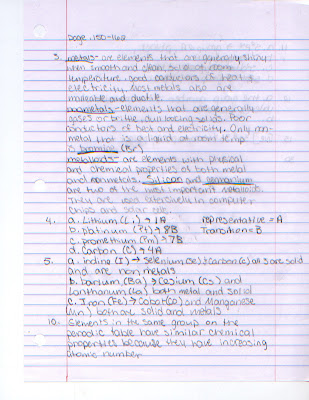A few days after Mole day we started on a periodic table scavenger hunt and during this worksheet I noticed some trend in the periodic table. Also learned more of the placement of the elements like:
| Metalloids | Nonmetals | ||||
|---|---|---|---|---|---|
| Other nonmetals | Halogens | Noble gases | |||
| Metals | |||||
| Alkali metals | Alkaline earth metals | Lanthanoids | Transition metals | Post-transition metals | |
| Actinoids | |||||
If you click Periodic Table it will take you to the website I used to do the scavenger hunt. And my paper is below.
After the scavenger hunt I learned that the periodic table has many trends and also that they have trends for a reason. The periodic table has columns and rows of varying sizes. The reason behind the table's odd shape becomes clear if it is divided into sections, or blocks, representing the atom's energy sub level being filled with valence elections. Because there are four different energy sub levels (s, p, d, and f), the periodic table is divided into four distinct blocks. The s block consists of group 1A and 2A, the p block is 3A through 8A, the d- block consists of 3B through 8B and continues through 1B and 2B. Here are some example problems on my paper that shows I know what the periodic table is about and what consists with in it.




No comments:
Post a Comment